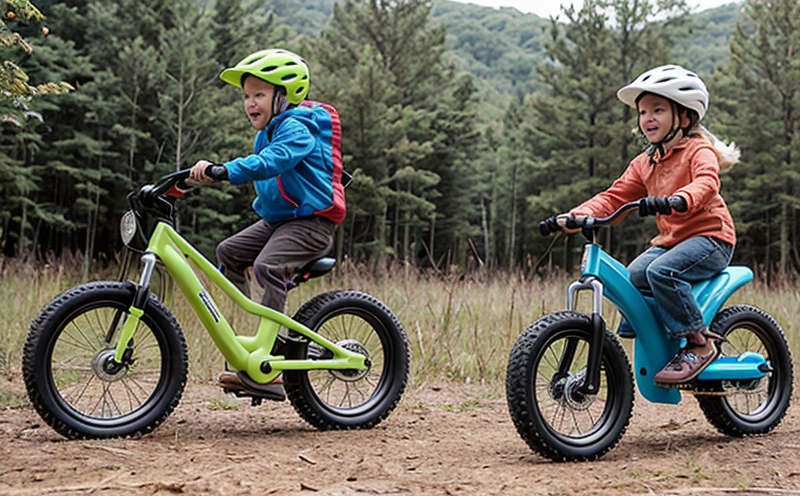EN 71-1 Stability and Tip-over Resistance Test
The EN 71 series of European standards provides comprehensive safety requirements for toys to ensure they are safe for children. Among these, the EN 71-1 standard specifically addresses mechanical and physical properties of toys. The stability and tip-over resistance test is a crucial part of this standard ensuring that ride-on toys and outdoor equipment do not pose any risk of tipping over and causing injury.
The EN 71-1:2019 specifies the test methods to determine whether a toy can remain stable under specified conditions. This includes testing for tip-over resistance, which ensures that the toy does not tip over easily when subjected to external forces such as a child climbing or jumping on it. The stability requirements are critical because an unstable ride-on toy could potentially cause falls and injuries.
The test setup involves placing the toy in a specific position and then applying defined loads at various points to simulate real-world scenarios where children might interact with the toy. For instance, when a child climbs onto or jumps off a ride-on toy, it must be able to withstand these actions without tipping over. The stability test ensures that such toys meet safety standards under both static and dynamic conditions.
In this test, the specimen (the ride-on toy) is positioned on a flat surface with its wheels parallel to the direction of gravity. A load is then applied at specific points along the length of the toy using standardized weights or force applicators. The toy must maintain its upright position throughout this process without tipping over.
The acceptance criteria for stability and tip-over resistance are stringent, ensuring that toys meet the highest safety standards. Toys failing to pass these tests may not only be considered unsafe but could also face legal implications. Compliance with EN 71-1 is essential for toy manufacturers aiming to protect children's health and safety while maintaining market access.
This test is particularly important for ride-on toys, which are popular among young children due to their fun nature and educational value. Ensuring these toys meet stability and tip-over resistance requirements not only protects child safety but also enhances the reputation of toy brands committed to high-quality standards.
Why Choose This Test
The EN 71-1 Stability and Tip-over Resistance test is a critical component in ensuring ride-on toys and outdoor equipment are safe for children. By choosing this test, toy manufacturers and sellers can:
- Ensure compliance with international safety standards.
- Protect the reputation of their brand by offering safe products.
- Avoid potential legal issues associated with product liability.
- Increase consumer trust, leading to higher sales and market share.
The test provides peace of mind for parents and guardians who want to ensure that the toys they purchase are safe. Additionally, it helps manufacturers identify any design flaws early in the development process, allowing for necessary modifications before products hit the market.
Quality and Reliability Assurance
- Comprehensive Testing: Our facility offers a full range of testing services to ensure that every aspect of ride-on toys is evaluated for safety. This includes not only the stability test but also other critical tests such as flammability, chemical content, and noise levels.
- Expertise in Standards: We are well-versed in all relevant international standards, including EN 71-1, ensuring that our clients receive accurate and reliable results.
- Precision Instruments: Utilizing state-of-the-art equipment ensures consistent and repeatable test results. Our instruments adhere to the latest calibration standards to provide precise measurements.
We pride ourselves on providing a thorough testing process that not only meets but exceeds industry expectations. This commitment to quality is reflected in our rigorous adherence to international standards and continuous improvement of our testing protocols.
Environmental and Sustainability Contributions
In addition to ensuring the safety of ride-on toys, we also focus on environmental sustainability. By conducting thorough stability tests, we help manufacturers design products that are not only safe but also durable and long-lasting. This reduces waste in landfills as consumers do not need to replace these items frequently.
Our testing ensures that materials used in the construction of ride-on toys comply with environmental regulations, promoting a greener manufacturing process. Furthermore, by identifying potential design flaws early, we contribute to reducing material waste during production and ensure resources are used efficiently.





